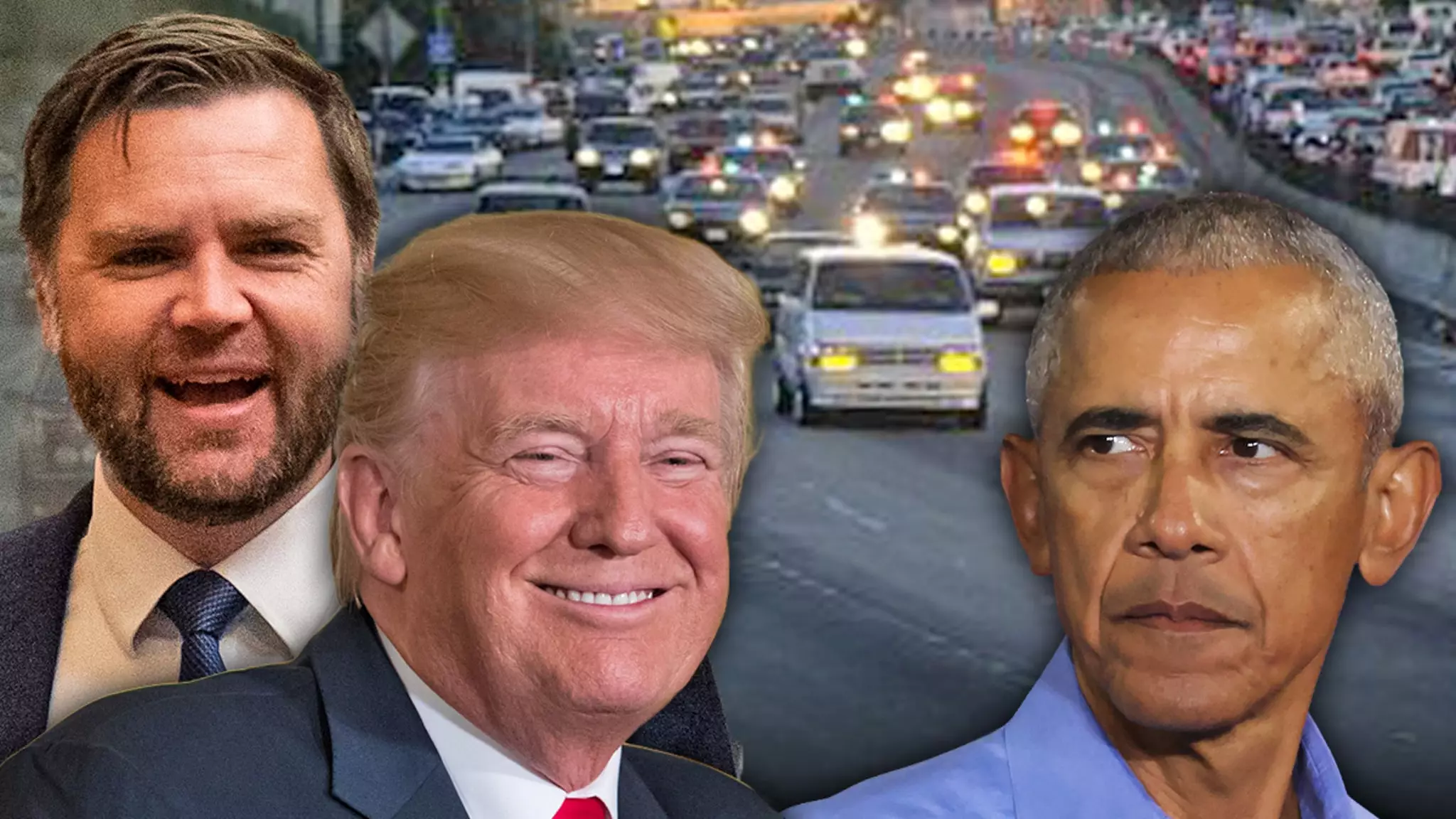In an era where social media has transformed political discourse into calculated performances, Donald Trump’s recent post exemplifies how leaders leverage humor, controversy, and nostalgia to shape public perception. By sharing an edited meme that depicts him in a dramatic chase reminiscent of O.J. Simpson’s infamous 1994 police pursuit, Trump underscores his mastery of sensational spectacle. This act is not merely about garnering laughs; it’s a strategic move that blurs the lines between parody and political messaging, directly engaging his base and amplifying divisive narratives.
The meme itself, which dollops humor onto a serious political context, serves multiple functions. For Trump, it’s a display of defiance—mocking the ongoing investigations and Democratic accusations surrounding his administration. For observers, it’s a reflection of the evolving landscape where tactics of shock and satire become tools of political warfare. While some may dismiss this as juvenile provocation, it showcases an understanding of media dynamics: A powerful, visceral image can sometimes outweigh nuanced policy debates in shaping public opinion.
The Intersection of Political Allegations and Media Manipulation
The meme arrives amidst heightened tensions over allegations that President Trump’s team engaged in a “treasonous conspiracy” involving Russia. The narrative hinges on claims of election interference, a topic that fuels partisan debates and diversifies media coverage. Despite a lack of concrete evidence, these accusations have persisted, driven largely by partisan motivations and political theater. The 2020 Senate investigation, which confirmed Russian interference, did little to quell the controversy; instead, it became fodder for further politicized discourse.
The response from Obama’s camp, dismissing such allegations as a “ridiculous” distraction, exemplifies how partisan narratives often escalate rather than resolve conflicts. Trump’s meme—featuring him photoshopped into the iconic police chase—can be seen as a visual metaphor for the ongoing chase for narrative dominance, spectacle over substance. It epitomizes how political figures choose to frame complex issues through provocative imagery that rally supporters and intensify viewer engagement, regardless of factual accuracy.
The Power Play of Cultural Symbols and Public Perception
By referencing the infamous O.J. Simpson chase, Trump taps into a cultural touchstone that evokes chaos, media coverage, and public fascination. This choice of imagery isn’t accidental; it’s a deliberate attempt to evoke emotional reactions rooted in American pop culture. Such symbols can serve as shorthand, simplifying intricate political accusations into recognizable and emotionally charged scenes.
However, this approach also raises concerns about maturity and responsibility in leadership. Manipulating public perception through sensational visuals risks trivializing serious issues while fueling polarization. It’s a reminder that in the modern political arena, the leverage gained from viral memes and provocative posts often outweighs the merits of substantive debate.
Trump’s latest maneuver exemplifies how contemporary politics increasingly resembles a game of perception warfare—where shock value and visual storytelling often take precedence over policy. Whether supporters see it as clever satire or reckless spectacle, one thing is clear: social media’s capacity to manipulate narratives has fundamentally transformed the landscape, making the line between political satire and strategic propaganda thinner than ever.

